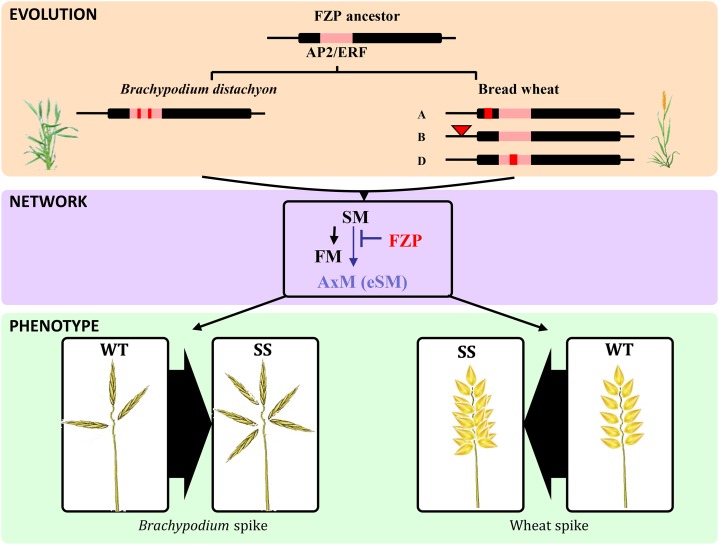Figure 5.
Evolutionary and functional model of FZP in grasses. FZP genes are illustrated as black horizontal bars showing substitutions in the AP2/ERF domain (red boxes), frameshift mutations (red bars), and TE insertions in the promoter region (red triangle) leading to FZP nonfunctionality and driving SS phenotypes in B. distachyon and wheat. In wild-type (WT) bread wheat, FZP represses the formation of AxMs from spikelet meristems (SMs) and controls the establishing FM identity. By contrast, in SS mutants, AxM is not suppressed and leads to ectopic spikelet meristem (eSM) formation.

